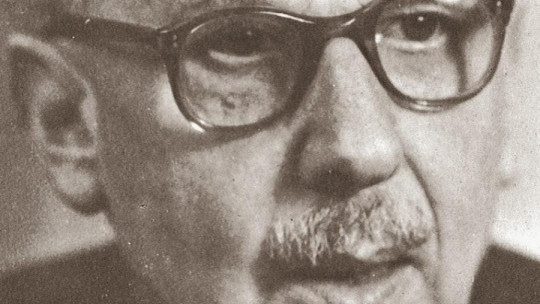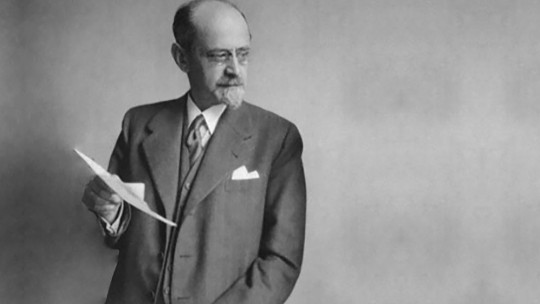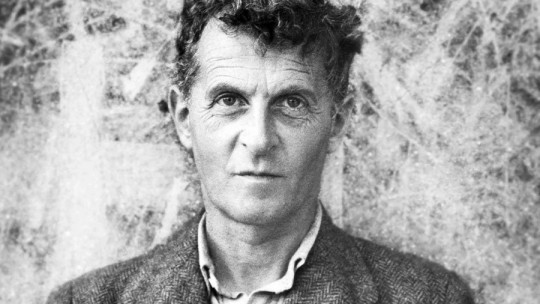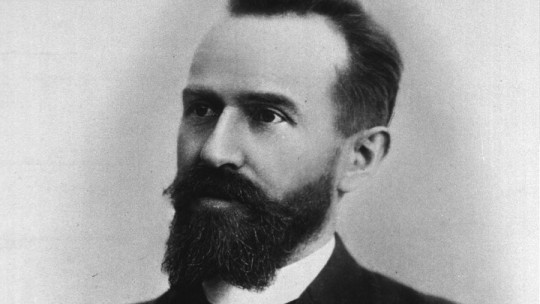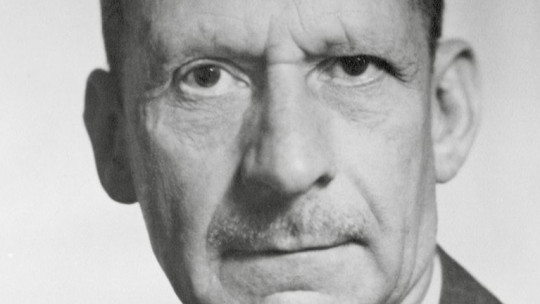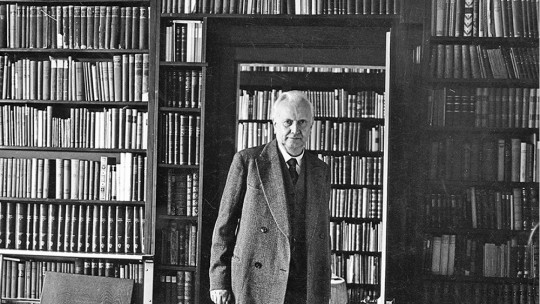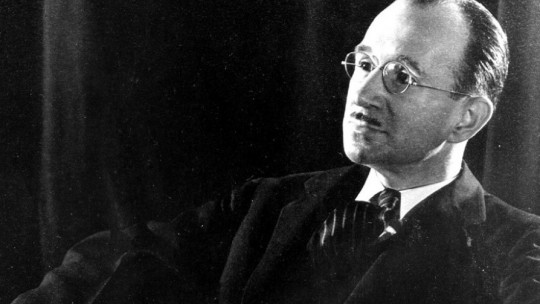The phenomenological current is, at the same time, a philosophical school through which many authors have made contributions to the field of psychology. One of them is Ludwig Binswanger, creator of concepts such as “Dasein” (“being in the world”) and “Daseinanalyse” (existential analysis).
This Swiss psychiatrist drew on great authors to develop his theory, and he worked as a mental health doctor practically his entire life. In this article we will see a biography of Ludwig Binswanger and we will know in detail its important theoretical contributions.
Ludwig Binswanger: short biography
Ludwig Binswanger was a Swiss psychiatrist born in the city of Kreuzlingen, in 1881. He died in 1966, at the age of 84. His educational career focuses on the phenomenological philosophy of Edmund Husserl (philosopher and mathematician, founder of transcendental phenomenology) and in the existentialist orientation of Martin Heidegger (German philosopher).
Professionally, he worked as a doctor and as director of a clinic for people with mental disorders in his hometown, Kreuzlingen.
One of the contributions of this psychiatrist was the introduction of psychoanalysis in Switzerland (although he later moved away from this theoretical orientation). Specifically, he put it into practice in his Psychiatric Clinic. In addition to running the clinic, he worked as a doctor there. As a result of his work there and his years of work, he was able to compile a lot of information from clinical cases that would allow him to develop his theory and work.
the beginning
Ludwig Binswanger studied medicine between 1900 and 1906, in Lausanne, Heidelberg and Zurich Before working as a doctor, he worked as a volunteer assistant at a university clinic called Burgholzli.
At that time, this clinic was headed by the famous psychiatrist Eugen Bleuler (also Swiss), who made important contributions to the field of schizophrenia. Thus, Binswanger was nourished by Bleuler’s knowledge , who was a great influence on him. Later, Ludwig Binswanger obtained his doctorate, completing his doctoral thesis on the psychogalvanic reflex, under the direction of Carl Jung.
Theoretical orientation in philosophy
Ludwig Binswanger’s theoretical orientation focuses on the current of thought initiated by Karl Jaspers, a German psychiatrist and philosopher born in 1883. This current was based on the phenomenological method applied to psychopathology. Ludwig Binswanger, influenced by numerous authors (psychiatrists and psychologists of the time), adopts a phenomenological, humanistic and existential point of view in his work.
In the field of psychology, Ludwig Binswanger considers mental disorder as an “inauthentic” way of living and one’s own existence and encompasses a series of gaps, defenses, denials, renunciations or losses of freedom that the person manifests.
Influences
The authors who most influenced Ludwig Binswanger were Sigmund Freud (from whom he gradually distanced himself), Franz Brentano (German philosopher born in 1838), Karl Kaspers and Edmund Husserl.
Little by little, Ludwig Binswanger adopted the ideas of these other authors, and built his own theory. Another of his influences, Martin Heidegger, allowed him to really delve into existentialist thought For Heidegger, and referring to this type of philosophical thought, the most important thing about philosophy was to clarify the meaning of being and find its way of access.
From these ideas, Ludwig Binswanger establishes the concept of “Dasein” (“being in the world”, “existing”), which we will see later. Thus, the thoughts of this Swiss psychiatrist took shape, and ended up adopting the name “Daseinanalyse”, which means existential analysis
Ludwig Binswanger’s existential analysis became one of the most important currents in the history of contemporary psychology. We will address this concept later. First, let’s get to know the foundations of Binswanger’s theory, based on phenomenology.
Phenomenology
The phenomenology that Ludwig Binswanger ended up adopting and developing, and which we will explain below, was actually originated by Franz Brentano, one of its influential authors.
Brentano, in reality, planted the foundations for this current to germinate; He contributed a series of works close to phenomenology, where he emphasized the experience and intentional nature of acts, in addition to the active character of the subject.
Although Brentano made great contributions that allowed the seed of phenomenology to be sown, The main representative of the phenomenological current, and the one who really started it, was Husserl
Phenomenology, of which Ludwig Binswanger was a defender, considers that “the immediate experience of the act of knowledge can reveal the nature of things”; That is, it focuses on immediate experience as an explanatory factor of the origin of what we observe and, ultimately, of reality. Its defenders, such as Binswanger, advocate an analysis of observable phenomena in order to explain being and consciousness.
Types of phenomenologies
But there is not a single type of phenomenological current; Furthermore, Ludwig Binswanger actually developed a specific type of phenomenological current: categorical phenomenology, focused on searching for the deep meaning of things
In addition to this, there is descriptive phenomenology, developed by K. Jaspers, which focuses on carefully and as accurately as possible describing the experience. Finally, we find genetic-structural phenomenology, developed by Minkowski, and which focuses on “describing the disorder that generates the problem and deducing the person’s state of consciousness.”
Binswanger’s Daseinanalysis
Focusing on Ludwig Binswanger’s categorical phenomenology, we find another interesting and fundamental concept in his theory: the “Daseinanalyse” (existential analysis). This concept alludes to the understanding of the structure of “Dasein”, a term that means “being in the world”.
That is, Ludwig Binswanger considered it essential to understand how we position ourselves in the world, and that is why he developed this philosophical concept, which largely defines his work and his theoretical orientation Thus, in reality, Ludwig Binswanger’s “Daseinanalyse” refers to a therapeutic procedure that synthesizes psychoanalytic, phenomenological and existentialist concepts.
Binswanger’s existential analysis is based on a phenomenological anthropology, which seeks to understand man in depth, understanding that man is in direct contact with the world of phenomena. Through this method, he aims to understand the cause of mental illness, its hidden “meaning.” He relates mental disorders to a failure in existence, in “Dasein” itself.
Existential analysis and “Dasein”
As we have seen, another central concept in Ludwig Binswanger’s work is that of existential analysis (“Daseinanalyse”). This phenomenon (and psychotherapeutic method) that he proposes, moves away from the psychoanalysis that the psychiatrist began to follow, considering it reductionist
In relation to “Daseinanalyse”, and in order to carry it out, Ludwig Binswanger proposes the concept of “Dasein”, already explained. “Dasein” has a structure that can be studied, described and rectified (modified). In turn, it is made up of three elements:
1. Umwelt
The first element of Dasein proposed by Ludwig Binswanger refers to the biological and physical part of the being the most “tangible” part.
2. Mitwelt
It is being with others, in relation to others ; It encompasses the interpersonal world of the person.
3. Eigenwelt
The eigenwelt refers to how we experience ourselves
Plays
Some of Ludwig Binswanger’s most important works were:

